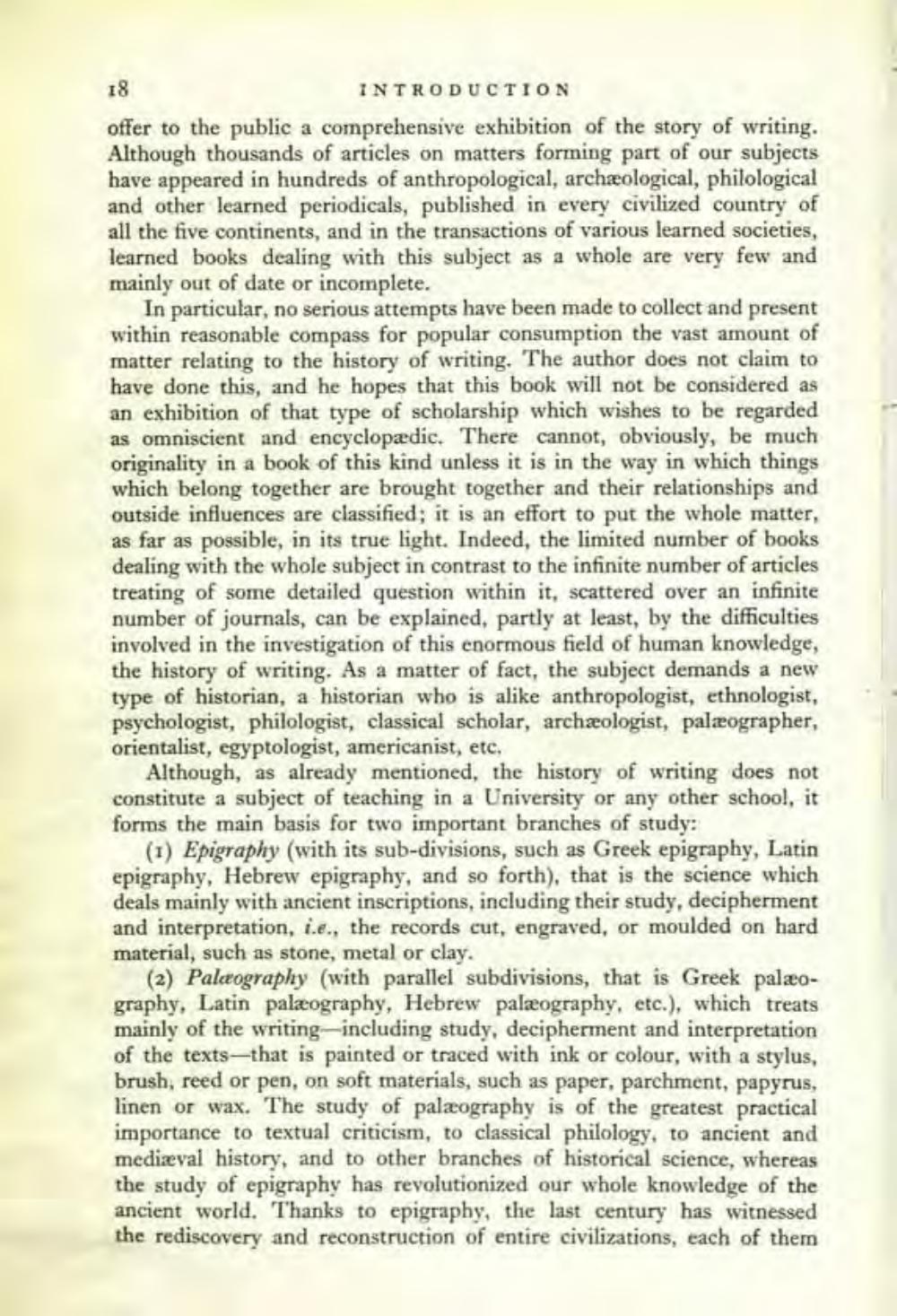________________
18
offer to the public a comprehensive exhibition of the story of writing. Although thousands of articles on matters forming part of our subjects have appeared in hundreds of anthropological, archæological, philological and other learned periodicals, published in every civilized country of all the five continents, and in the transactions of various learned societies, learned books dealing with this subject as a whole are very few and mainly out of date or incomplete.
INTRODUCTION
In particular, no serious attempts have been made to collect and present within reasonable compass for popular consumption the vast amount of matter relating to the history of writing. The author does not claim to have done this, and he hopes that this book will not be considered as an exhibition of that type of scholarship which wishes to be regarded as omniscient and encyclopædic. There cannot, obviously, be much originality in a book of this kind unless it is in the way in which things which belong together are brought together and their relationships and outside influences are classified; it is an effort to put the whole matter, as far as possible, in its true light. Indeed, the limited number of books dealing with the whole subject in contrast to the infinite number of articles treating of some detailed question within it, scattered over an infinite number of journals, can be explained, partly at least, by the difficulties involved in the investigation of this enormous field of human knowledge, the history of writing. As a matter of fact, the subject demands a new type of historian, a historian who is alike anthropologist, ethnologist, psychologist, philologist, classical scholar, archæologist, palæographer, orientalist, egyptologist, americanist, etc.
Although, as already mentioned, the history of writing does not constitute a subject of teaching in a University or any other school, it forms the main basis for two important branches of study:
(1) Epigraphy (with its sub-divisions, such as Greek epigraphy, Latin epigraphy, Hebrew epigraphy, and so forth), that is the science which deals mainly with ancient inscriptions, including their study, decipherment and interpretation, i.e., the records cut, engraved, or moulded on hard material, such as stone, metal or clay.
(2) Paleography (with parallel subdivisions, that is Greek palæography, Latin palæography, Hebrew palæography, etc.), which treats mainly of the writing including study, decipherment and interpretation of the texts-that is painted or traced with ink or colour, with a stylus, brush, reed or pen, on soft materials, such as paper, parchment, papyrus, linen or wax. The study of palæography is of the greatest practical importance to textual criticism, to classical philology, to ancient and mediæval history, and to other branches of historical science, whereas the study of epigraphy has revolutionized our whole knowledge of the ancient world. Thanks to epigraphy, the last century has witnessed the rediscovery and reconstruction of entire civilizations, each of them




